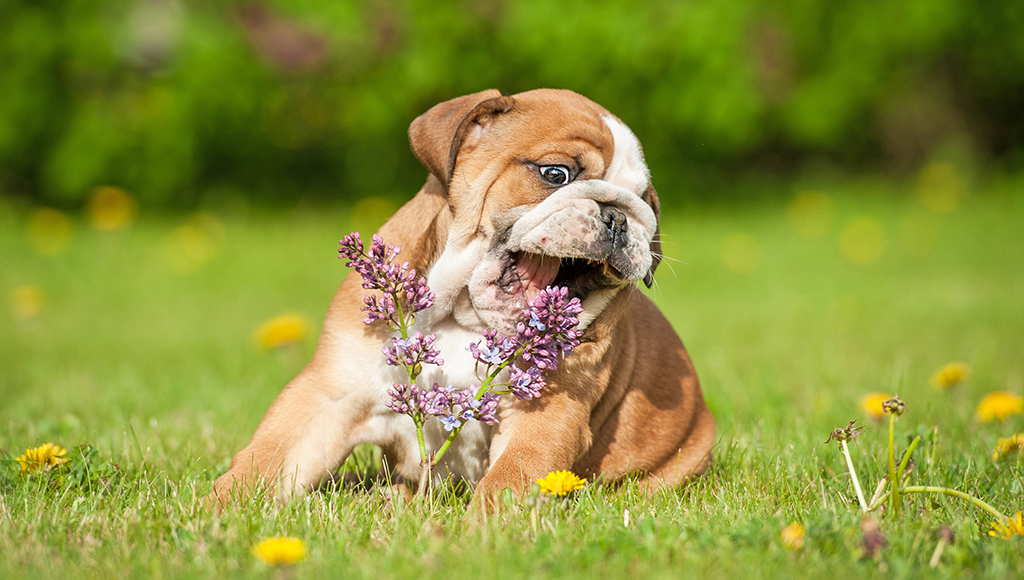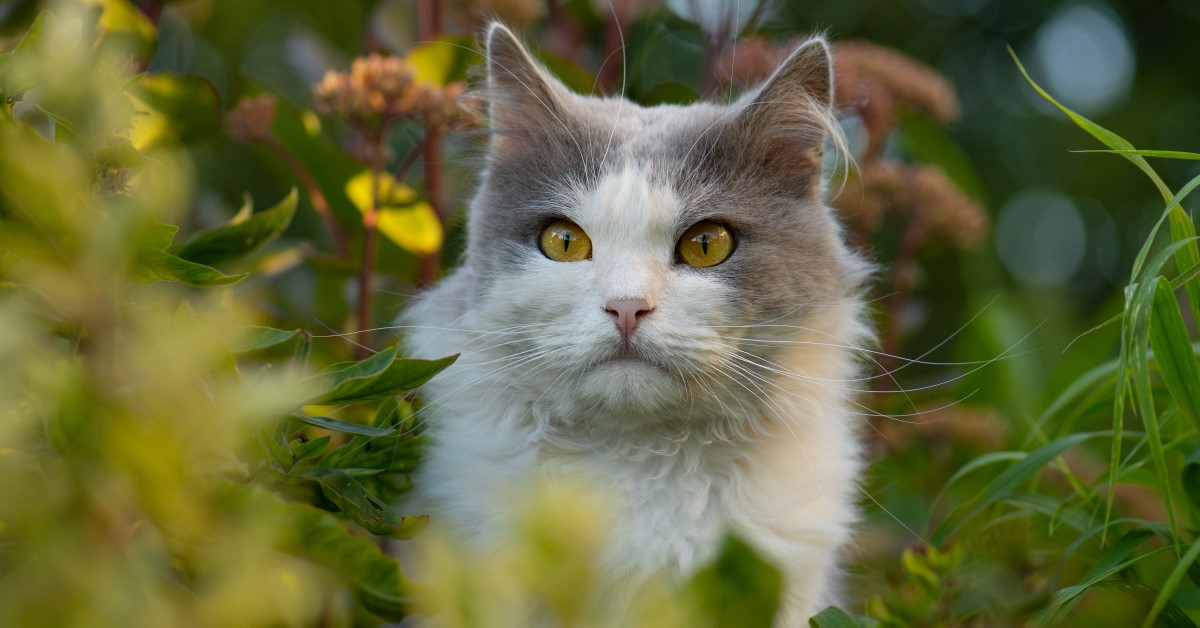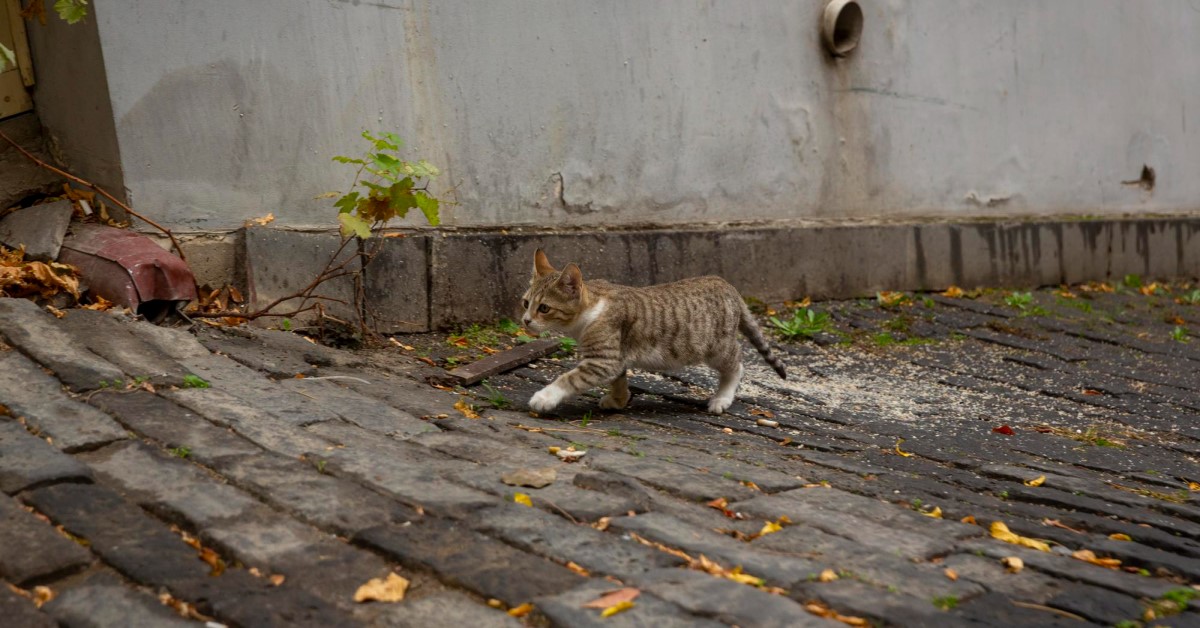Pretty Plants Can Be Dangerous
Make sure your yard is beautiful and safe for your pet.

It's getting warmer outside and the spring flowers are blooming. You may be thinking of what to plant for summer. We all love our yards to be beautiful, but, it may not occur to us that some of the plants most commonly chosen by us to landscape our lawns, can actually be quite hazardous to our beloved pets. Be careful about what you plant - especially if your pets like to chew. Many of the flowers and shrubs you grow in your yard may be hazardous if your pets eat them. Below are some plants that are commonly found in gardens and flowerbeds:
- Azalea - Azaleas contain grayantoxins, a toxic substance that can cause symptoms including: vomiting, diarrhea, drooling, weakness and lethargy. Severe poisoning can cause heart problems, leading to coma and death.
- Castor Bean - Castor beans contain a toxin called ricin, a protein that can cause severe abdominal pain, vomiting, diarrhea, excessive thirst, drooling, weakness and appetite loss. Severe cases can cause dehydration, muscle twitches, tremors, seizures, coma and death.
- Cyclamen - Cyclamen plants contain a toxin called cyclamine, but the root of the plant contains the greatest concentration. If eaten, Cyclamen can cause stomach problems including vomiting. In rare cases it has been fatal to pets.
- Kalanchoe - This plant can be grown outdoors or indoors in containers. It is a popular houseplant that has cactus-like leaves. Kalanchoe contains components that can cause stomach upset. Some types of the plant have toxins that can seriously affect cardiac rhythm and rate.
- Lilies - Members of the Lily family can be highly toxic to cats. The poisonous component is not known, but eating small amounts of the plant can cause severe kidney damage.
- Oleander - All parts of the oleander plant can be toxic. The plant contains oleandrin and neriine, which are cardiac glycosides that can cause stomach and intestinal irritation, abnormal heart function, hypothermia and even death.
- Rhododendron - Rhododendrons, like azaleas also contain the toxin called grayanotoxin in their pollen and nectar. This toxin can result in the following symptoms in animals: vomiting, diarrhea, drooling, weakness and lethargy
- Sago Palm - All parts of Cycas Revoluta (also known as Sago Palm) are poisonous, but the seeds or "nuts" contain the most toxins. Eating just one or two seeds can cause vomiting, diarrhea, depression, seizures and liver failure.
- Tulip/Narcissus Bulbs - If your pet digs in the garden, be careful about planting bulbs. The bulb portions of Tulip and Narcissus contain toxins that can cause intense stomach problems, drooling, appetite loss, lethargy, convulsions and heart problems.
- Yew - All parts of the Yew tree are highly toxic, except the bright red area surrounding the seed. Yews contain a toxin known as taxine, which causes central nervous system symptoms such as trembling, poor coordination and difficult breathing. The toxin can also cause stomach upset and heart failure.
To be safe, when in doubt, ask your Veterinarian if a plant or shrub is toxic. If your veterinarian is unavailable, you can contact the experts at ASPCA either via phone or email. If you suspect your pet has ingested a plant that may be poisonous, don't panic. Pets may accidentally eat a toxic plant from time to time; therefore, it is wise to determine a course of action beforehand. When an accident happens, here is what you should do:
- Stay calm
- Quickly scout the area for any pieces of plant material (even partially digested pieces) that you can show the vet
- If time allows, call ahead to your vet and let the office know you are on the way, this may help save time when you arrive, which essential in getting treatment for your pet as quickly as possible.
- If you are unable to move your pet, call the Animal Poison Control Center (APCC) as well as your current vet. The APCC is open every day, twenty-four hours a day. Be aware that a $55.00 consultation fee may be applied. Post the number for the APCC (1-888-426-4435) in a readily accessible place. It might be a good idea to post it with your other emergency phone numbers. When you call the hotline, be ready to give the operator some basic information about your pet and what has occurred. Clearly state the pet's name, breed, sex, and age and give a clear and concise account of what transpired. Carefully describe your pet's symptoms. You will also want to state your name and a contact number where you can be reached in case the call gets disconnected.
Sometimes an animal may consume a hazardous material and act as
though nothing strange has happened. This is because some toxins
take a while to have a negative effect and symptoms may not be
obvious until hours, or even days, have passed. Therefore, always
stay attuned to your pet's actions and do not hesitate to consult
a vet if you believe something might be wrong. Think about
investing in a first aid kit for your pet. Your veterinarian may
be able to give you an idea what items would be helpful and
essential in your kit.
Ready to start saving money on pet wellness care?
Then take a look at Mint Wellness, the pet wellness plan that provides fast reimbursement on routine pet care. Save on vaccinations, wellness exams, preventatives, dental, and more!
Learn More


